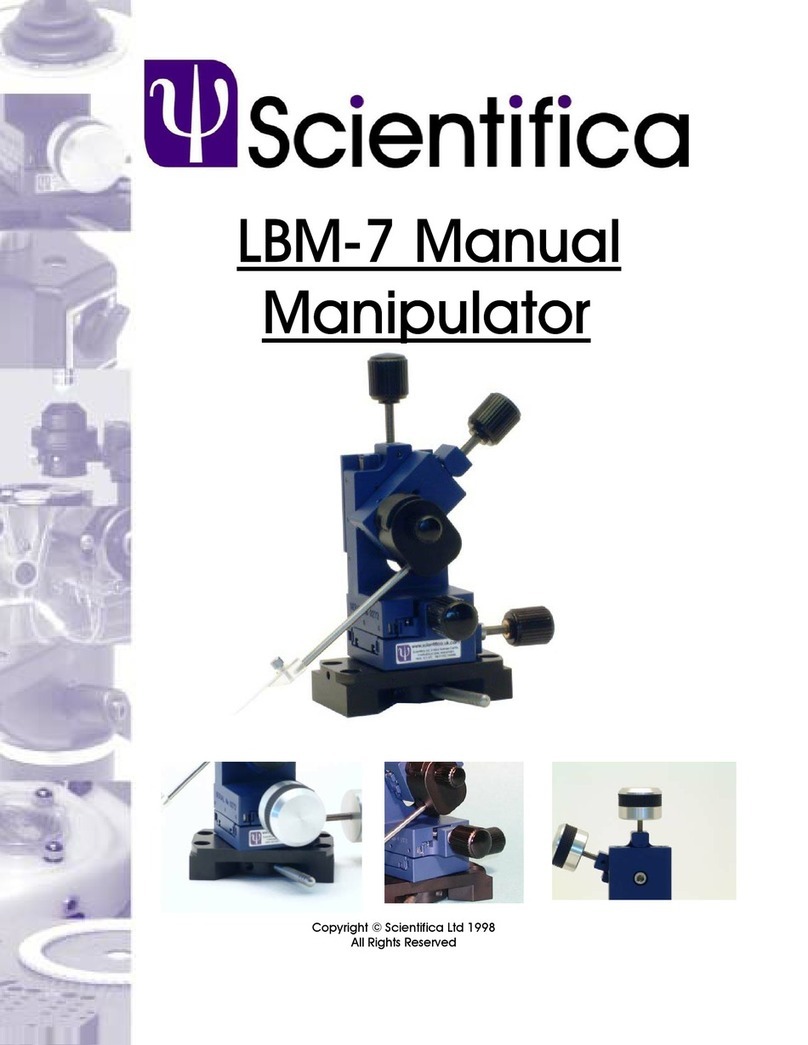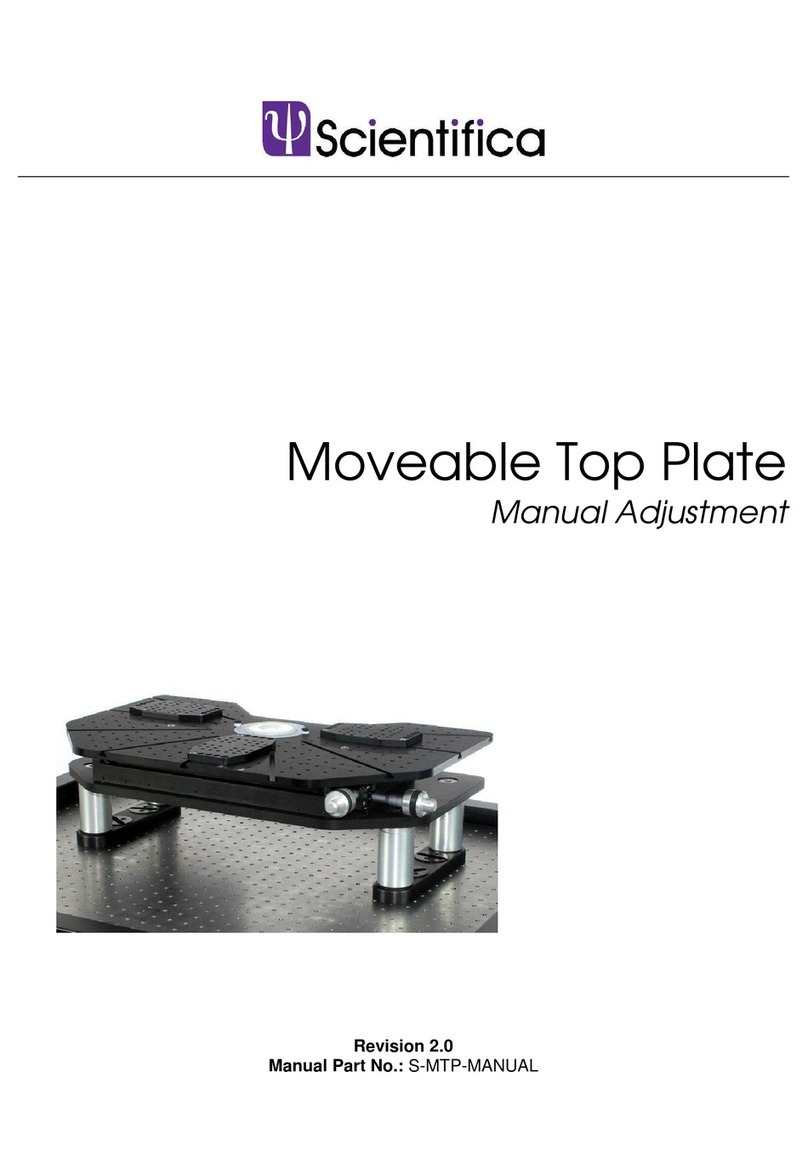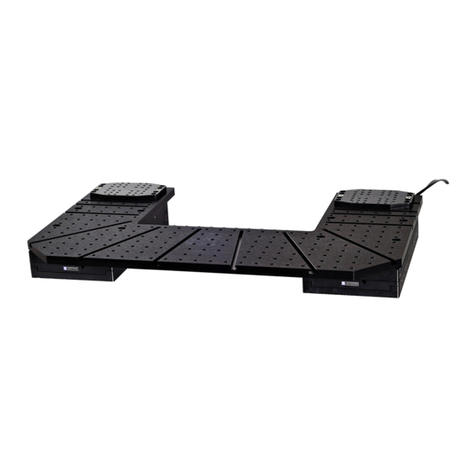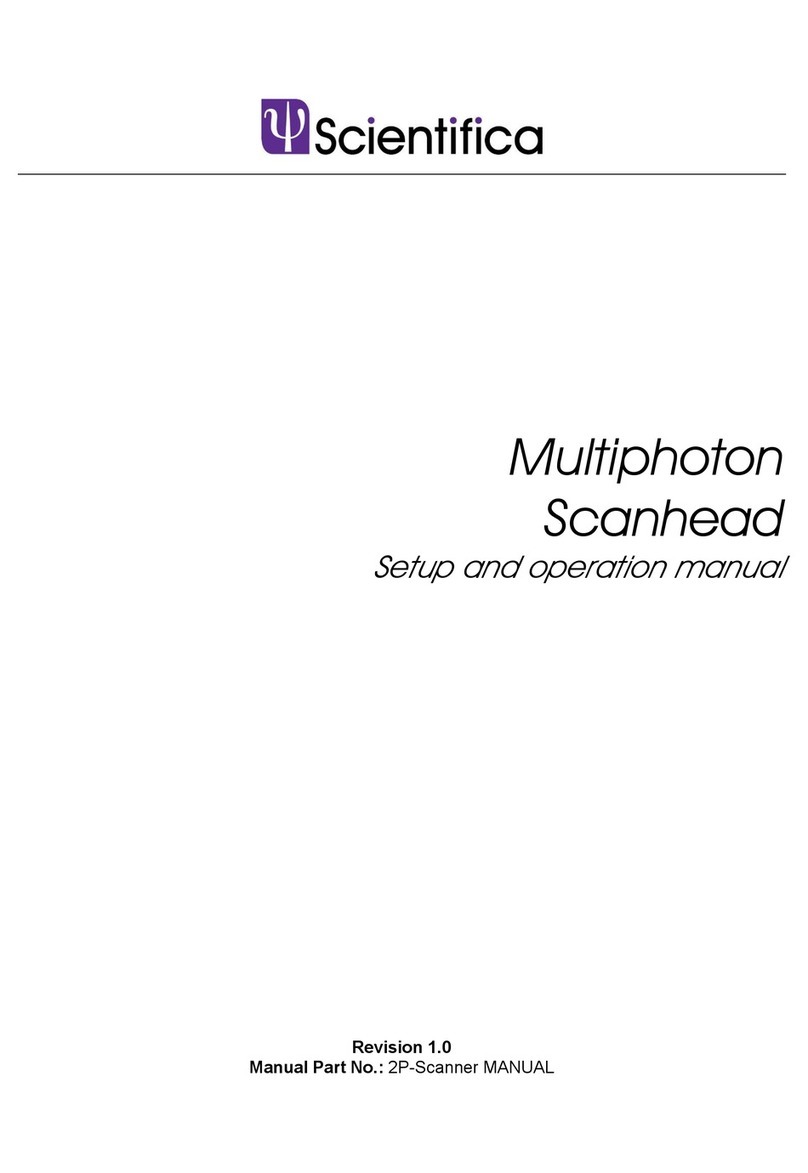
3
Heat Exchanger and Peltier Device
The heat exchanger has been developed for efficient transfer of heat energy to
the flowing perfusion fluid. The design is compact, containing a similar length of
tubing as alternative water bath systems thereby retaining comparable heat
density reducing risk of fluidic gassing. The body of the heat exchanger is
manufactured from aluminium, providing excellent heat transfer characteristics.
The polyethylene tube is pressed into the exchanger in a coiled form; the precision
“U” groove ensures tube retention during assembly. The low thermal mass of the
heat exchanger enables the system to heat rapidly and respond to control
demands much more quickly than water bath systems.
The Peltier device is used to transfer heat to and from the heat exchanger; the
device provides a large flat surface area to interface the thermal surfaces. The
heat exchanger assembly is mounted directly to the Stainless Steel ground plane
of the SliceMate. The heat exchanger spiral is held in position by a stainless steel
spring clip; this ensures the heat exchanger has ideal contact with the Peltier
device when the system is assembled.
System Screening
The SliceMate is grounded via the thermal control board and power supply, this
connects to the rig's star ground point (clean earth). The SliceMate is insulated
from the table to eliminate potential ground loops. A heavy duty Stainless Steel
ground plane has been included within the SliceMate to minimise the effects of
system and ambient noise. In our experience no additional screening of the system
is normally required although in high electrical noise environments the use of a
Faraday cage may be necessary.
System Connections
Waste Vacuum Port
The outlet port or 'waste vacuum port' interfaces to a 3.2mm internal diameter
silicon waste tube carrying waste to a high volume solution waste trap. The internal
heat exchanger waste tube is manufactured from stainless steel; it is grounded
within the SliceMate reducing electrical noise induced by the vacuum suction. The



































